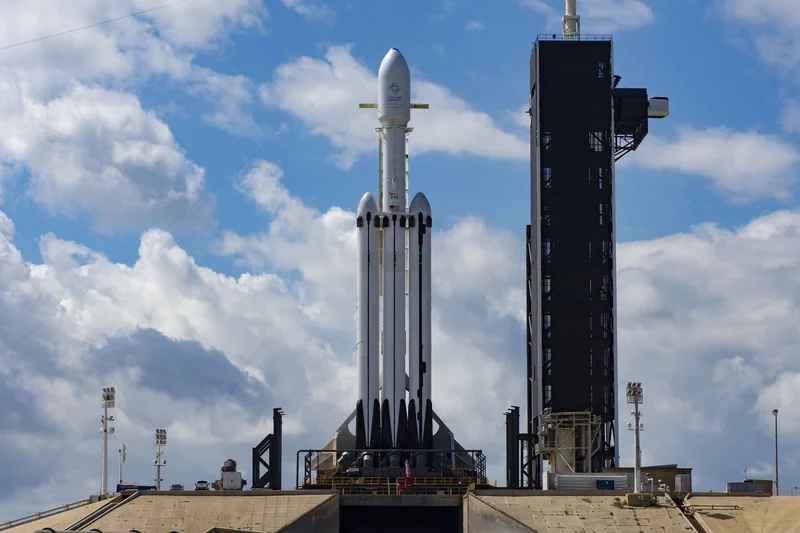Sentinel-6B: A Rising Tide of Data to Stem the Tide of Climate Change
Here we go, folks! Another launch, another leap forward. Last night, watching that Falcon 9 arc across the California sky, I couldn't help but feel a surge of that familiar, almost childlike wonder. But this wasn't just another "spacex launch today" – this was Sentinel-6B, soaring towards its orbit, carrying with it the promise of a clearer, more data-rich future for our planet. Sentinel-6B ocean monitoring satellite launches aboard Falcon 9
We've been tracking sea levels from space for over 30 years now, starting with TOPEX/Poseidon. Think about that for a second: three decades of continuous data! It's easy to get lost in the daily headlines, the political squabbles, but this—this long-term, unwavering commitment to understanding our oceans—that's something truly inspiring. Sentinel-6B isn't just replacing its predecessor; it's enhancing that legacy, ensuring that this vital stream of information keeps flowing.
And what is that information? Well, Sentinel-6B is packing some serious tech. We're talking Poseidon-4, a radar altimeter that can measure the distance to the ocean surface with incredible precision. It's like having a super-powered, space-based measuring tape, accurate to within a few centimeters. Then there's AMR-C, which measures water vapor in the atmosphere—crucial for correcting the altimeter's readings. And let's not forget the POD package, which pinpoints the satellite's exact location in space. You see, you need to know exactly where the satellite is to know exactly what it's measuring, and this suite of instruments makes that possible.
But the real magic, the thing that makes my heart race a little, is the GNSS-RO payload. This uses signals from navigation satellites to build a profile of temperature, pressure, and water content in the atmosphere. It's like shining a light through a prism and seeing the hidden colors, revealing atmospheric secrets that would otherwise remain invisible.
What does all this mean? It means we're building a more comprehensive, more detailed picture of our planet than ever before. Sentinel-6B isn't just measuring sea levels; it's measuring the health of our oceans, the pulse of our atmosphere. It's a vital tool for understanding climate change and predicting its impacts.
Now, I know what some of you are thinking: "Another satellite? More data? What's the big deal?" Well, consider this: climate change is a complex, multifaceted problem. It's not enough to just know that the planet is warming; we need to understand how it's warming, where it's warming, and why it's warming. We need to track the rise in sea levels, the changes in ocean currents, the shifts in atmospheric patterns. And we need to do it with unprecedented accuracy and precision.

Sentinel-6B is a key piece of that puzzle. It's providing the data we need to make informed decisions, to develop effective strategies for mitigating the impacts of climate change. It's giving us the tools to protect our coastal communities, improve our weather forecasting, and support sustainable ocean activities.
I saw a comment on a Reddit thread that really resonated with me: "It's not about if the sea levels are rising, it's about how fast and where so we can actually do something about it." That's the crux of it, isn't it? Data is power, and Sentinel-6B is giving us the power to act.
There's always a "but," right? Here's mine: with all this power comes responsibility. We need to ensure that this data is used wisely, that it's accessible to everyone, and that it's not manipulated or misused for political gain. We need to be transparent about the limitations of the data and honest about the uncertainties involved. And we need to remember that data alone is not enough; we need the political will to act on it.
What's truly exciting is the collaborative nature of this mission. It's a joint effort between the US and Europe, bringing together the best minds and the best technologies from both sides of the Atlantic. NASA, NOAA, ESA, EUMETSAT—they're all working together towards a common goal. It's a reminder that even in a world of increasing division and polarization, we can still come together to tackle the biggest challenges facing humanity.
The Falcon 9 booster, B1097.3, made its third flight and landed safely back at Vandenberg. It’s amazing to consider that this very rocket has now launched missions supporting both internet access and now, climate study. What a testament to the flexibility of technology! SpaceX plans rocket launch from Vandenberg. Where to see liftoff in California
And you know what? When I watched the launch livestream, seeing that rocket climb into the inky black sky, I couldn't help but feel a surge of hope. It was a reminder that even in the face of seemingly insurmountable challenges, we are not powerless. We have the technology, the ingenuity, and the determination to build a better future. What this means for us is a chance to truly understand our planet, and what it could mean for you is a future where we are prepared for the changes coming.
The launch of Sentinel-6B wasn't just another "spacex falcon 9 launch;" it was a declaration. A declaration that we are committed to understanding our planet, to protecting our future, and to working together to build a more sustainable world. The rising tide of data will, if we are smart, help us stem the tide of climate change. Let's make sure we rise to the occasion.